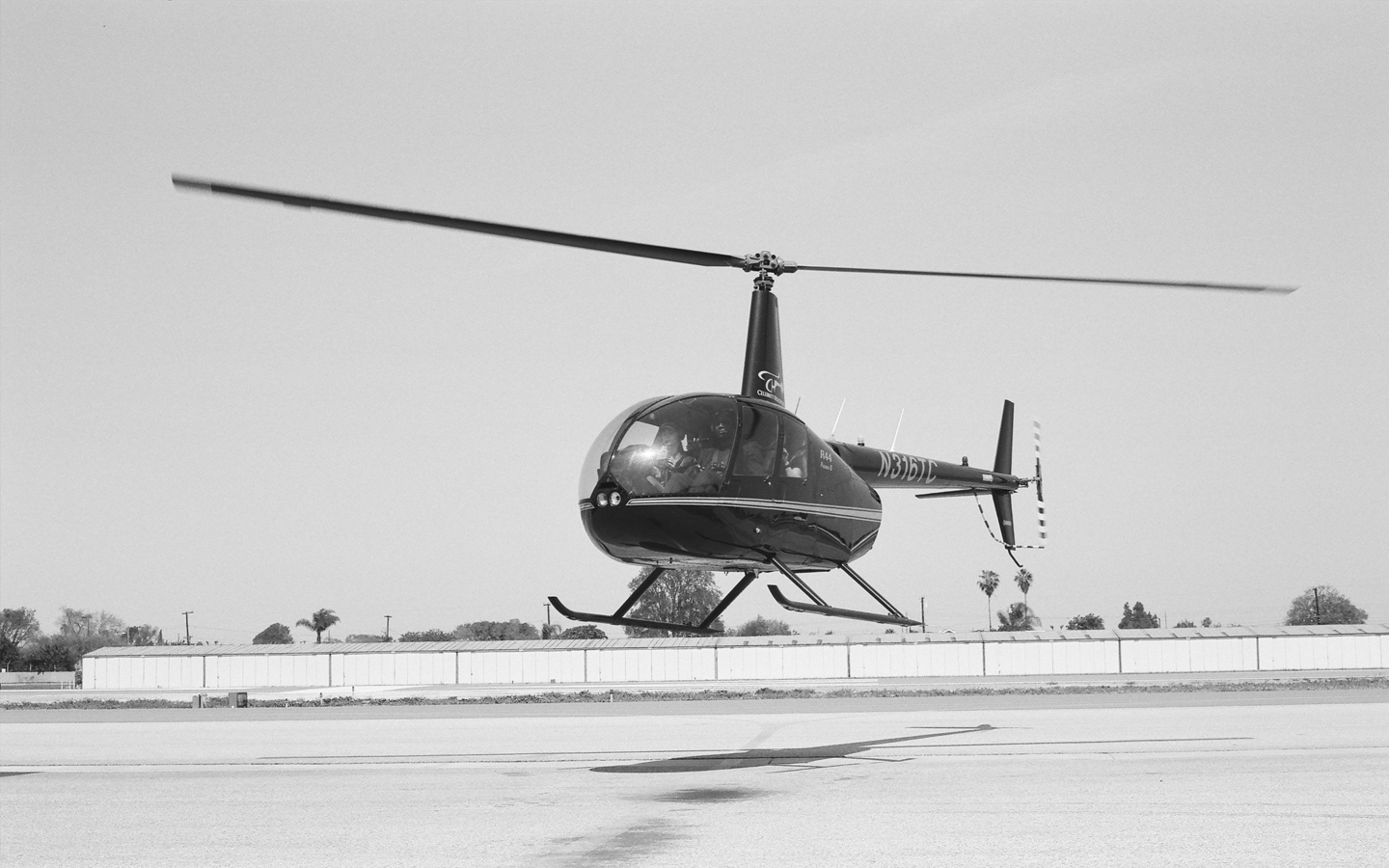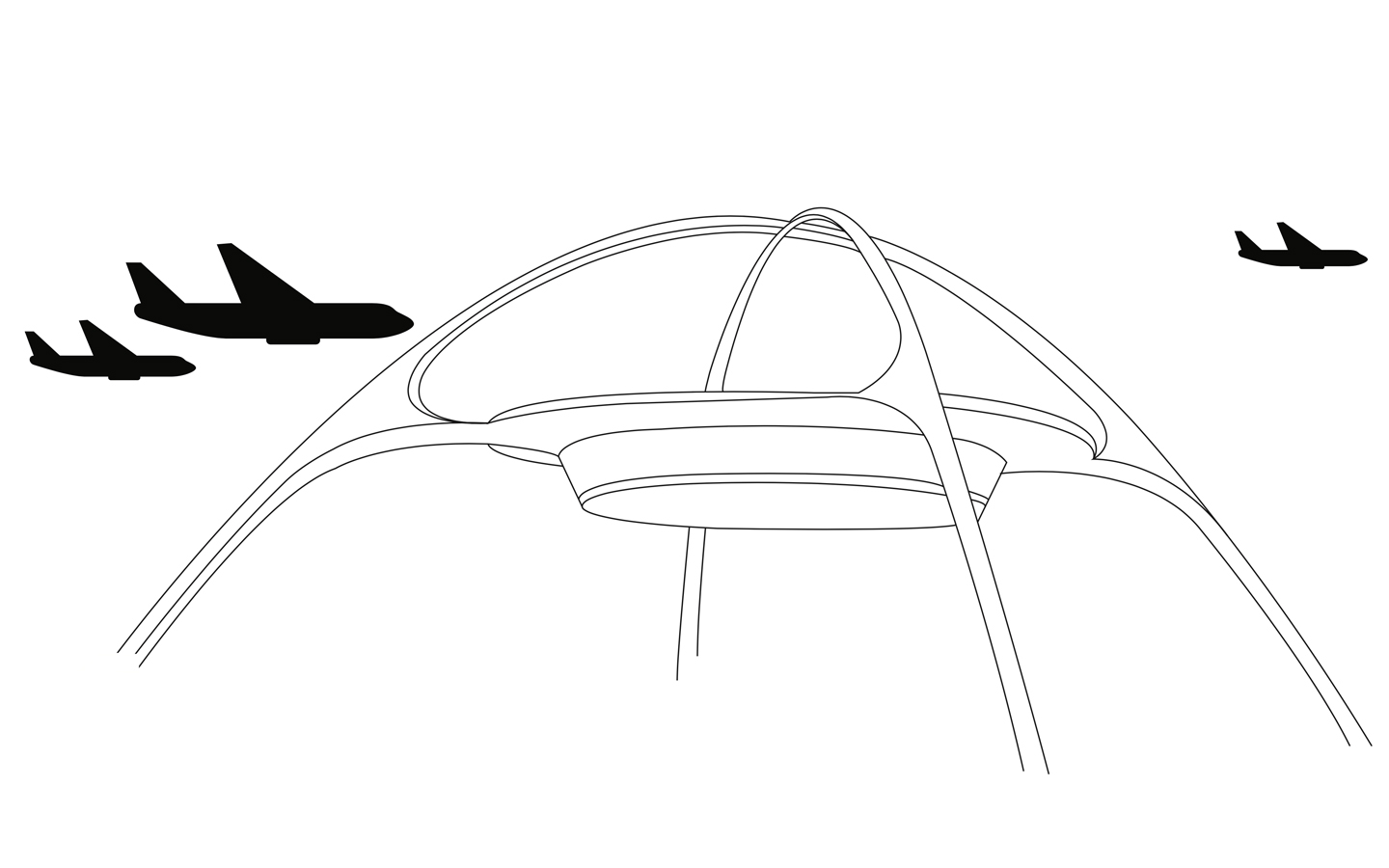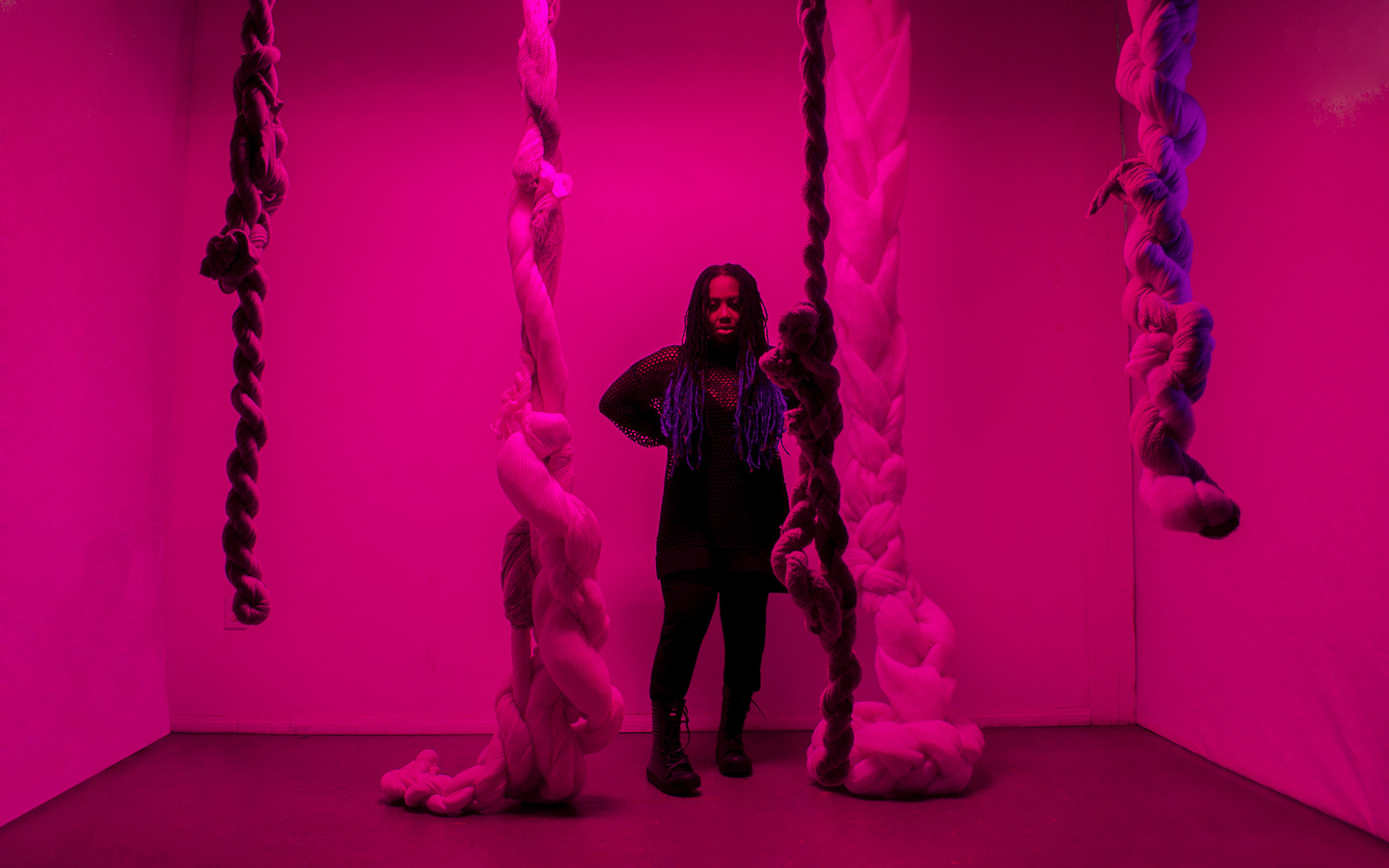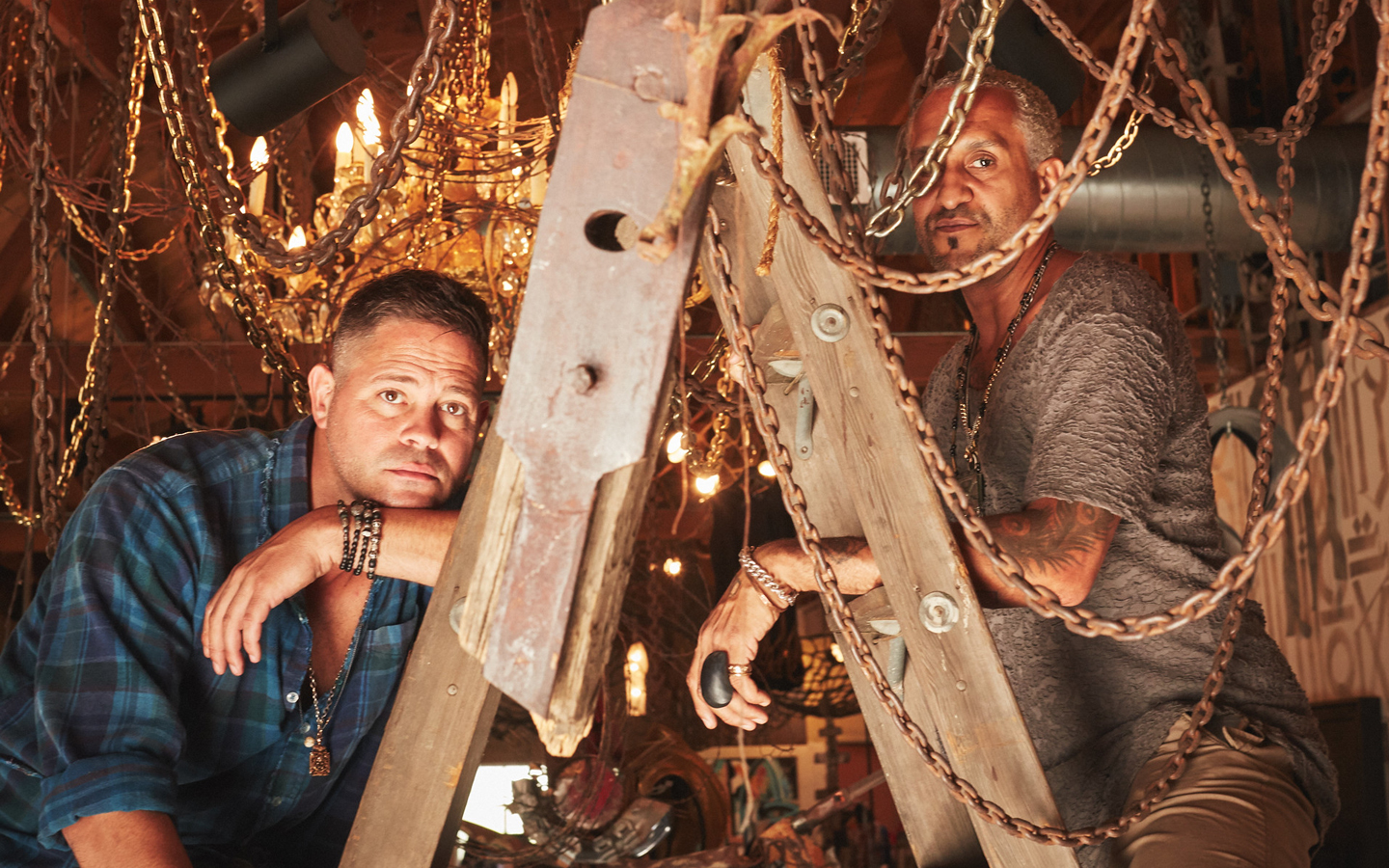
Robin Petgrave of Tomorrow’s Aeronautical Museum
TEXT HASSAN GALEDARY
VISUAL ADAM HUTSELL
It’s not so often I step into an airplane hangar off the side of a runway; especially one that serves as the headquarters of teenage rocket scientists. Welcome to Tomorrow’s Aeronautical Museum (TAM), with record-breaking pilots and an after-school program that acts as a career center and incubator for the minds of the twenty-first century.
Guess where it’s at? Compton.
I remember the two after-school programs I attended in 1999: the Culver City Police Department’s Juvenile Diversion Program and the LA County Sheriff Department’s VIDA program. It was like Scared Straight! meets Marine Corps boot camp, without the rifle training. I got my face punched by a 25 year-old inmate through a window, with a deputy holding my head to the glass.
I carefully step through this hangar, looking at the world’s first electric-charged plane. You know who’s going to fly that first? Kids from the hood. Many Angelenos have never ventured south of Washington Boulevard, let alone the 105 freeway. Compton has much more than factories and housing projects; there’s a strong community deep-rooted in culture, music, sports, horse ranching, and breaking scientific fucking records.
The hangar has antique aircrafts pinned to the ceilings and statues of Tuskegee fighter pilots; F-16 flight simulators and a fleet of aircraft on the runway that springs from the Compton Airport. Plenty of hidden gems embedded in its concrete jungle. And in that jungle are thousands of brilliant young minds, sponsored by Robin Petgrave.
“I don’t want my kids to just be successful, I want them to run shit.” He spoke my language. But how did we get here?
The name ‘Robin Petgrave’ sounds like some shit straight out of a DC comic book. A kid born in Jamaica and raised in Boston let his curiosity get the best of him, leading him to a promised land beyond his wildest dreams. This Boston kid became obsessed with the train system in the city—where the trains went, which stops they made, how they turned around. He’d save his lunch money from school, skipping out on his daily nutrients, and use it to fund his local explorations. Nothing could stop him.
Robin knew he could be anything he wanted. He considered being a police officer or a firefighter, but said that police officers got shot and firefighters got burned. Too dangerous for a job, not worth the risk. Ideas of joining the military were short-lived due to the same possible outcomes. Plus, he had a problem with authority figures. He eventually went to college and became interested in the performing arts, which led him to the City of Angels.
Pursuing a career in acting was Petgrave’s main goal in his original push to LA. It was here that he saw a helicopter take off and land. He became curious once again, then let that lightbulb moment evolve into a plan: he maxed out his credit card’s $2,000 limit to pay for flight school. He didn’t have all the necessary funds, but knew he’d find a way. He wanted to fly so badly that nothing was going to stop him from boarding that chopper and skipping across through the clouds.
Robin racked up his training hours and was soon teaching lessons in Torrance. The frontier of a new life was on the horizon—but not yet in full scope. He spent copious amounts of time in the sky, both training and teaching, overcoming each obstacle along the way. Eventually, the obstacle was his own instructor—his boss. His boss asked him to do a risky flight operation that could compromise the integrity of Robin’s license and possibly his career. Basically, getting into deep shit over something his boss didn’t want to do personally.
But everything is on the fly with Robin, from whims to maneuvers. He said “fuck that” to his boss’s request, used his last $300 to lease a plane, and opened his own flight business next door: Celebrity Helicopters. Robin started taking students, finished out their lessons, and began pumping out pilots like hot lattes on a Monday morning at Starbucks.
Work plus hard work equals profit. His bank account began to swell, along with his name in the sky—literally. He soon realized there was more to life than commas in his savings and gaining material success. He thought about the WWII Tuskegee fighter pilots, who were not only Black American heroes, but beacons of hope in the sky for a besieged Europe. He wanted to honor those pilots, and he wanted to help people—people like himself. He knew there was something he could do, and the only person that could stop him was himself. It was time to step his game up.
Answers to those internal questions began to take shape. Robin founded the Torrance Aeronautical Museum in 1998, mentoring at-risk youth to teach them about aviation and making their dreams come true. First he’d bring kids to his hangar, and as the program grew, he’d land his chopper at schools to visit entire classrooms. The positive feedback was astronomical, and Robin was featured on the Oprah Winfrey Show in 1999. With a new sense of pride for the right reasons, he decided to take the donations and the bump in profits from the show’s recommendations and build something more.
Robin started calculating numbers in his head, from flight lessons to college tuition. He realized that if some kid from the deep blocks of South LA—or any other ghetto, for that matter—were to become interested in flying, there’d be no way of paying for the academy to learn. It just ain’t gonna happen, not in this lifetime. So how could kids from the inner city, whose families make just enough to put rice and beans on the table every night, afford flight lessons, let alone a full college ride?
It was time to let that entrepreneurial mind spread its wings and create a new business, one that would be the foundation of a new era. A new era of putting black and brown kids from the hood in the sky. Turning kids from the block into bosses. Not just success, but running shit.
Robin started the Aero Squad After School Program and began teaching kids how to actually fly. In 2001, after being recognized for his work in the community, he got an opportunity from Compton’s Mayor Perrodin to move his businesses to the Compton-Woodley airport. Robin packed up, TAM became Tomorrow’s Aeronautical Museum, and Celebrity Helicopters started putting most of its profits into the thriving youth program.
Fast-forward to today and the facility has evolved. TAM isn’t just for future pilots. It’s for future anythings. A boutique restaurant—built from a hollowed out World War II plane—sits in the lot of TAM. (Yes, they have a culinary program as well.) TAM has compiled a roster of prodigal children and already set fifteen aviation world records—all backed by the capeless crusader. Robin molded Isaiah Cooper at fifteen years old, who became the youngest pilot to fly across the United States. Even NASA and SpaceX have taken an interest in what these kids are building.
Every hood all across the country has untapped child prodigies waiting to be noticed, and all they need is that runway to take off. I look at the ink on my arms and see memories of a hundred kids I’ve met from this neighborhood and ones like it: Watts, South Central, Inglewood. I’ve run into some of those kids as men in adult institutions, and I still see the faces from those facilities, many of whom are spending life on a prison yard or have met the grave before their time. I’m hit with a moment of reality that’s washed with inspiration and hope as I walk out of the hangar into the reception offices. I’m lost looking at the awards and accommodations placard on the walls, seeing these kids’ faces on the news articles and national achievements. Those faces have empowering futures that will outshine my lifespan. From entré dishes to flying planes, building rockets, and shattering world records straight-outta-Compton, there’s nothing Robin and his company of rising stars won’t accomplish.




